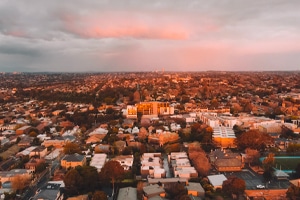Please fill out the details below to receive information on Blue Wealth Events
"*" indicates required fields

The ABS’s recent release of building activity around the country has shown a return to construction volumes last experienced in 2018. The seasonally adjusted figure for the final quarter of 2020 indicates 51,055 dwellings were commenced—33,761 of which were detached houses. The 16,049 ‘other’ dwellings (including apartments and townhouses) continue to be a far cry from the last peak in Q1 2018, when the figure was 28,702.
Despite Victoria’s bad press over 2020, the state’s 17,008 dwelling commencements over the quarter were higher than any other state or territory. New South Wales came in at a predictable second, recording 12,903 ahead of Queensland’s 9,348. What’s more interesting, however, is what parts of our states are recording the most housing supply activity. For that, we need to look at building approvals.
The most recent building approvals data for New South Wales shows the most activity in the city, with respective Sydney local government areas taking the top nine places by approval volume. In order, they are Blacktown, Parramatta, Canterbury-Bankstown, The Hills Shire, Camden, Liverpool, Georges River, Cumberland and Campbelltown. A similar story applies to Melbourne, where the top local government areas are also contained within the greater capital city boundaries.
We’ve seen waves of supply and demand in different areas at different times before, but what’s interesting about this buying activity is the prevalence of owner occupiers in the market. During the boom of the mid-2010s, lending to Australian investors ($10 billion in April 2015) was nearly equal to owner occupiers ($11.8 billion). In comparison, less than a quarter of the $29 billion borrowed in February 2021 was on behalf of investors. This constitutes part of regulators’ current comfort with what’s happening in the market, but this is something investors should be mindful of.
One of Buffett’s most overused quotes is that ‘only when the tide goes out do you discover who’s been swimming naked,’ and as far as longer-term market stability goes, overleveraged owner occupiers are something to watch during this market cycle. If supply also risks exceeding demand in these areas, an investment would be on shaky ground. The best way to avoid this particular risk is to ensure there is a healthy mix of occupant types in an area, demand for the particular type of property you’re investing in, and a reasonable ratio of dwelling prices to household incomes. Not all booming suburbs are made equal.
